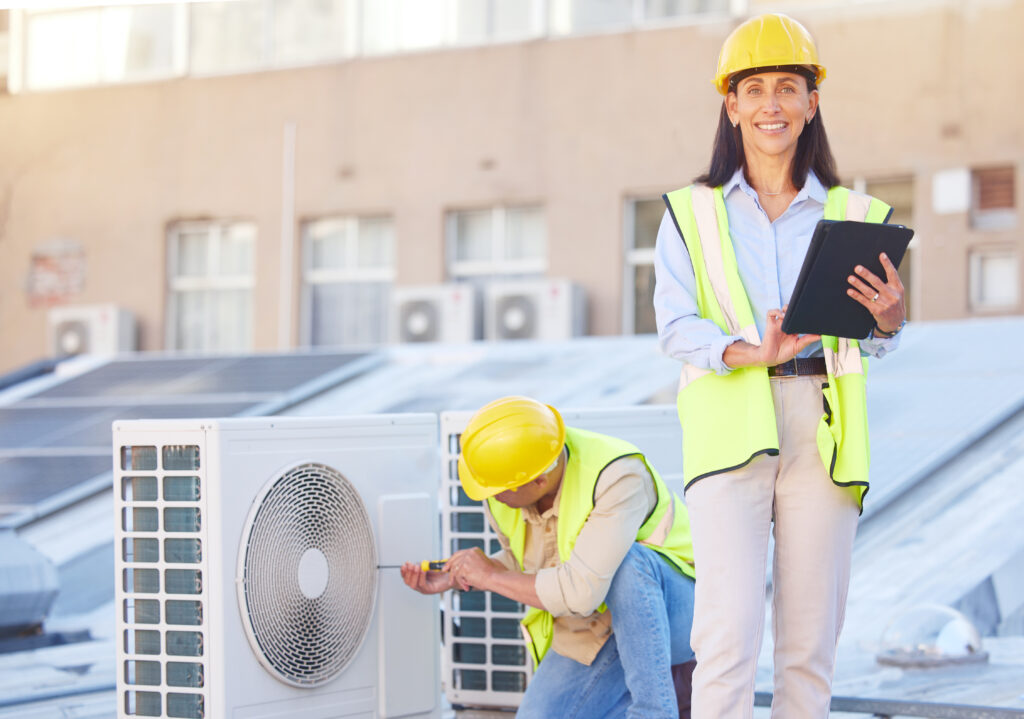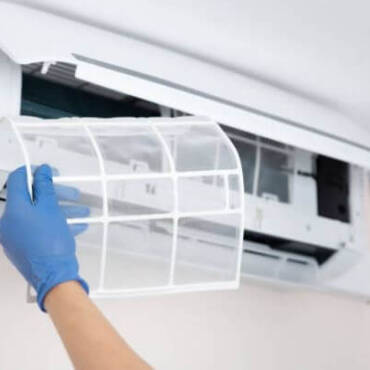Living in Southern California is a blessing – beautiful weather, stunning landscapes, and endless sunshine. But let’s face it, that sunshine can turn into a scorching enemy come summer, especially in the San Fernando Valley. As the temperature climbs, so does the battle for a cool and comfortable home. This age-old question arises: fans or air conditioners?
Both options have their place, and the best choice hinges on several factors, including your specific location within Los Angeles, your budget, and your personal preferences. This article delves into the world of fans and air conditioners, exploring their energy consumption, power usage, and how to utilize them effectively for optimal comfort throughout the year.
Understanding the Los Angeles Climate:
Los Angeles experiences a diverse climate depending on your specific location. Here’s a breakdown of the two major areas we’ll be focusing on:
- Greater Los Angeles: Los Angeles boasts a Mediterranean climate overall, but it’s important to consider the specific location within the city. Coastal areas generally experience cool, wet winters and warm, dry summers with refreshing nighttime dips in temperature. However, inland Los Angeles areas can see significantly hotter summer days, with nights offering less dramatic temperature drops compared to the coast. This is due to the lack of the ocean’s moderating influence.
- San Fernando Valley: Nestled inland, the San Fernando Valley experiences a hotter and drier climate compared to coastal LA. Summer days are scorching, with high humidity levels making it feel even more oppressive. Nights offer some relief, but not as much as coastal areas.
Fans: The Budget-Friendly Breeze
Now, let’s explore the world of fans and how they can be a fantastic choice for both Los Angeles and the San Fernando Valley, particularly during:
- Spring and Fall: When temperatures are mild, ceiling fans efficiently circulate cool air, creating a pleasant breeze.
- Mornings and Evenings: As outside temperatures naturally drop, fans help distribute cooler air throughout your home, maximizing comfort.
- In Conjunction with AC: Fans can work alongside your air conditioner, circulating cool air more effectively and allowing the AC to run less frequently, saving energy on your electricity bill.
Energy Consumption and Power Usage of Fans:
How much energy does your ceiling fan use? Forget the fancy term “cubic feet per minute per watt” – think of it like miles per gallon for your fan. The more air it moves per watt of energy, the more efficient it is, just like a car that goes further on less gas.
Here’s what affects how much power your fan uses:
- Motor Muscle: Bigger motors mean more power, but also more energy used. Think of it like a heavy-duty truck versus a zippy compact car.
- Speed Setting: High speed equals more power used, just like pushing your car pedal down further.
- Number of Blades: While the number of blades itself doesn’t directly affect efficiency, the way they’re designed and angled can make a big difference in how much air they move with less energy.
- Light Show or No Light Show? If your fan has a built-in light, that adds to the overall energy it uses. Think about it – you’re running a fan and a light bulb at the same time.
Estimated Power Usage:
Based on industry averages and product specifications, here’s a general breakdown of ceiling fan power usage:
- Typical Ceiling Fan: A standard ceiling fan with a light kit typically uses between 35 and 75 watts on its highest setting. Running it for eight hours a day would translate to an energy consumption of 0.28 kWh to 0.6 kWh. At an average electricity rate of 15 cents per kWh, this translates to a monthly cost of $0.04 to $0.09.
- Energy-Star Certified Fans: Look for Energy-Star certified ceiling fans. These models are designed to be significantly more efficient, using up to 60% less energy than standard models. This translates to even lower power consumption and electricity bills.
Efficiently Using Fans:
To maximize the cooling effect of fans and minimize energy use, consider these tips:
- Direction Matters: During hot weather, set your ceiling fan to counter-clockwise. This creates a downward airflow that creates a windchill effect on your skin.
- Placement is Key: Strategically place ceiling fans in frequently used areas, ensuring proper air circulation.
- Seal the Deal: Ensure your home is well-sealed to prevent hot outdoor air from entering. This minimizes the workload on your fan.
- Combine with Natural Ventilation: Open windows and doors during cooler evenings to bring in fresh air and maximize the cooling effect of your fan.
Air Conditioners: Essential for Beating the Heat
While fans are great for mild weather, air conditioners are a must-have for comfortable living in the San Fernando Valley during the peak summer months, and can be a valuable tool in Los Angeles when temperatures soar. Here’s why:
- Effective Cooling: Air conditioners provide a more powerful cooling effect, essential for dealing with the San Fernando Valley’s extreme heat and humidity.
- Year-Round Comfort: Modern AC units offer dehumidifying functions, which can be a lifesaver in the Valley’s hot, humid summers. Additionally, some models offer heating capabilities, providing year-round comfort control.
Energy Consumption and Power Usage of Air Conditioners:
Air conditioners are significantly more energy-consuming than fans. The exact power usage depends on the size and efficiency of the unit, as well as how often and how cool you set it. Here’s a general breakdown:
- Central Air Conditioning: Window units tend to be less efficient, while central AC units can range from 12,000 BTU (British Thermal Units) to 5 tons (or 60,000 BTU), with higher BTUs indicating a larger cooling capacity and higher energy consumption.
- Energy Efficiency Rating: Look for units with a high SEER (Seasonal Energy Efficiency Ratio) rating. The higher the SEER, the less energy the unit uses to cool your home.
Understanding Air Conditioner Energy Consumption:
The actual energy consumption of your air conditioner depends on several factors:
- Size and Efficiency (SEER Rating): As mentioned earlier, larger units with lower SEER ratings will consume more energy.
- Usage: The longer you run your AC and the cooler you set the thermostat, the higher the energy consumption.
- Home Insulation: A well-insulated home requires less work from your AC to maintain a comfortable temperature.
- Ductwork: Leaks in your ductwork can lead to inefficient cooling and higher energy bills.
Tips for Using Your Air Conditioner Efficiently:
- Programmable Thermostats: Invest in a programmable thermostat to set different cooling temperatures for different times of the day and night. This allows you to save energy while you’re away or sleeping.
- Right-size Your AC: Don’t over-cool your home. A larger unit than necessary will cycle on and off more frequently, wasting energy.
- Regular Maintenance: Schedule regular maintenance for your AC unit to ensure optimal performance and efficiency.
- Consider Smart Technology: Smart thermostats and air conditioners allow for remote monitoring and control, allowing you to adjust settings for maximum efficiency.
Fans on Windy Days: A Breath of Fresh Air
While fans are less effective on windless days, they can be quite beneficial on windy days. Here’s why:
- Wind Chill Effect: Wind blowing across your skin creates a wind chill effect, making you feel cooler. Fans can enhance this effect by circulating the cooler, wind-driven air throughout your home.
- Natural Ventilation: Open windows on the side of your home facing the wind to maximize airflow and create a natural cooling effect. Utilize strategically placed fans to circulate this cool air throughout the house.
Windless Days: Maximizing Fan Efficiency
Even on windless days, fans can still contribute to your comfort:
- Create a Cross Breeze: Open windows on opposite sides of your home to create a cross breeze. Position fans to circulate this air for maximum cooling effect.
- Ice Power: Place a bowl of ice in front of a fan. As the ice melts, the cooler air will be circulated throughout the room, providing a refreshing sensation.
- Cool Down Yourself: While fans won’t cool down the entire room significantly on windless days, they can still provide a cooling effect on your person through sweat evaporation.
The Maintenance Advantage: Fans vs. Air Conditioners
We’ve explored the benefits of both fans and air conditioners for achieving optimal comfort in the Los Angeles or San Fernando Valley summer climate. However, even the most dependable appliances require occasional maintenance or repairs. Let’s delve into the differences between fan and AC repairs, and what to expect in each scenario.
Fan Repairs: A DIY Delight (Sometimes)
Ceiling fans are relatively simple machines. Many common fan issues, like flickering lights or imbalanced blades causing wobbling, can be addressed with basic DIY skills and readily available replacement parts. For minor electrical problems or malfunctioning switches, consulting a qualified electrician might be necessary.
The good news? In most cases, a malfunctioning fan doesn’t leave you completely without air circulation. You can often replace a faulty fan altogether for a relatively low cost, especially compared to AC units.
AC Repairs: Calling in the Professionals
Air conditioners, on the other hand, are complex machines with intricate electrical components and refrigerant lines. Diagnosing and repairing AC issues typically requires a trained and licensed HVAC technician. Attempting DIY repairs on your AC unit can be dangerous and even worsen the problem.
Here’s why AC repairs are generally more involved:
- Specialized Knowledge: Technicians possess the expertise to diagnose complex malfunctions and identify the root cause of the problem.
- Safety Concerns: AC units contain refrigerant, which can be harmful if mishandled. Trained technicians have the proper safety gear and knowledge to handle refrigerant safely.
- Availability of Parts: Replacement parts for AC units may not be readily available at hardware stores and might require technicians to source them from specialized distributors.
The upshot? While AC repairs can be more expensive than fan repairs due to the complexity of the system and the expertise required, a well-maintained AC unit is essential for battling the scorching Los Angeles summer, especially in the San Fernando Valley. Regular maintenance by a qualified and trusted Los Angeles HVAC technician can prevent costly repairs down the line, ensuring your AC operates at peak efficiency and delivers the cool comfort you crave during those hot and humid months. Think of it as an investment in your year-round comfort and peace of mind.
MightyServ: Your Partner in Cool Comfort
Whether you reside in Los Angeles or the San Fernando Valley, MightyServ is here to help you find the perfect solution for your cooling needs. As a trusted HVAC contractor, we understand the unique climate challenges of each area.
We offer a wide range of services, including:
- Air Conditioner Sales and Installation: Our experienced technicians can help you choose the right AC unit size and SEER rating for your home, ensuring efficient cooling and long-term savings.
- AC Repair and Maintenance for Los Angeles and the San Fernando Valley: Whether you reside in Los Angeles with its mild Mediterranean climate or the scorching summers and high humidity of the San Fernando Valley, MightyServ is here to ensure your cool comfort all year round. Our certified technicians are experts in AC repair and maintenance, equipped to handle the unique needs of both regions.
- Home Insulation Assessments: A well-insulated home requires less work from your AC unit, saving you money on your energy bills. We can assess your home’s insulation and recommend improvements if needed.
Contact MightyServ Today!
Don’t let the Los Angeles heat get you down. Whether you need a powerful air conditioner for the San Fernando Valley’s scorching summers or a budget-friendly fan solution for mild Los Angeles weather, MightyServ is here to help.
Call us today or fill out our contact form to schedule a free consultation. Our friendly and knowledgeable technicians will assess your needs and recommend the perfect cooling solution for your home, ensuring year-round comfort without breaking the bank.
Additional Tips:
- Consider zoning your AC system: This allows you to control the temperature in different areas of your home independently, maximizing comfort and efficiency.
- Invest in energy-efficient appliances: Generate less heat in your home with energy-efficient appliances, reducing the workload on your AC unit.
- Plant trees around your home: Trees provide shade, which can significantly reduce the heat gain in your home, minimizing AC usage.
Whether you require installation, repair, or maintenance, our technicians will assist you with top-quality service at any time of the day or night. Take comfort in knowing your indoor air quality is the best it can be with MOE heating & cooling services Ontario's solution for heating, air conditioning, and ventilation that’s cooler than the rest.
Contact us to schedule a visit. Our qualified team of technicians, are always ready to help you and guide you for heating and cooling issues. Weather you want to replace an old furnace or install a brand new air conditioner, we are here to help you. Our main office is at Kitchener but we can service most of Ontario's cities
Source link




Add Comment